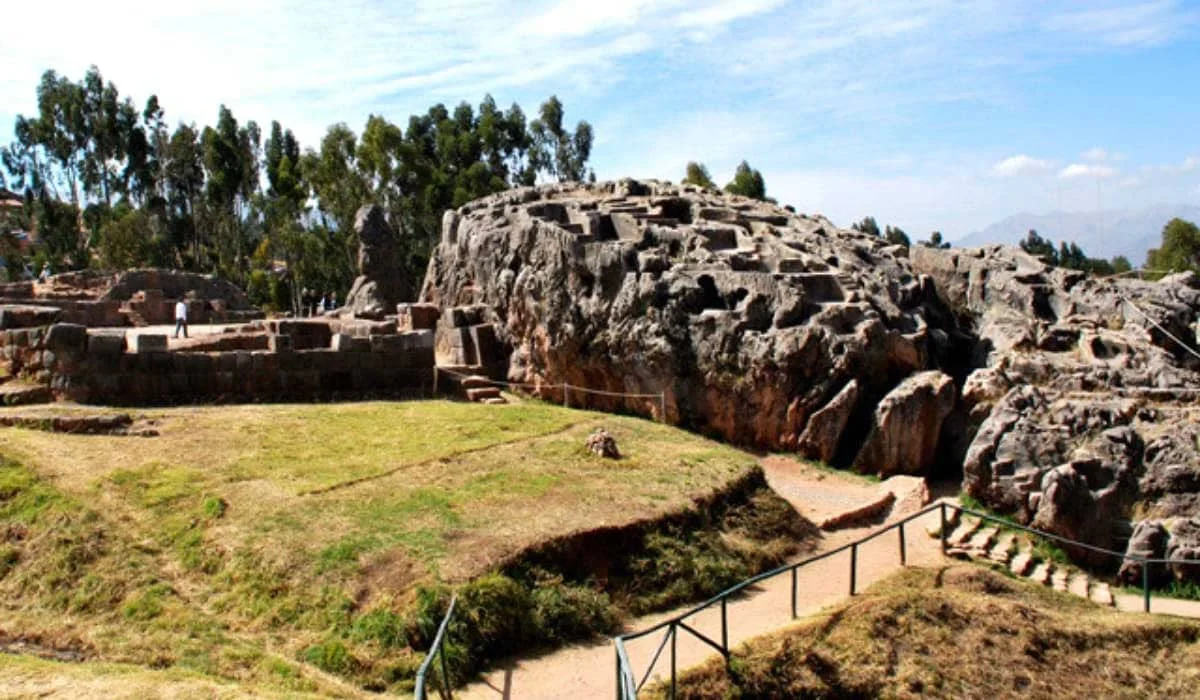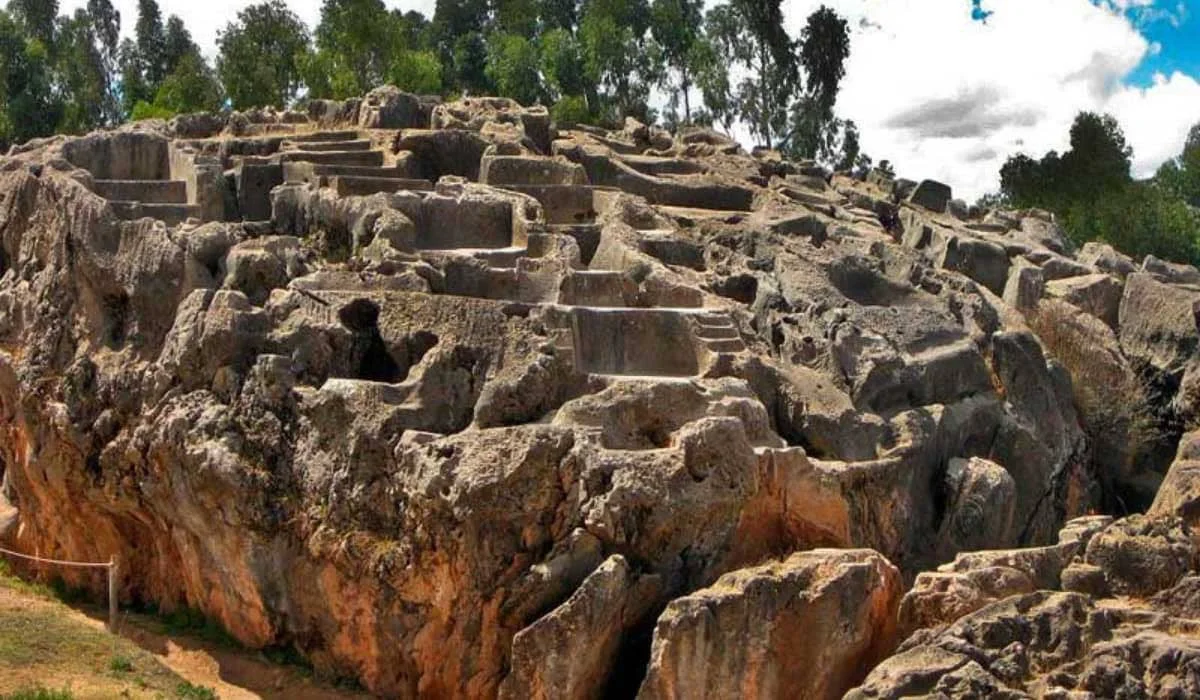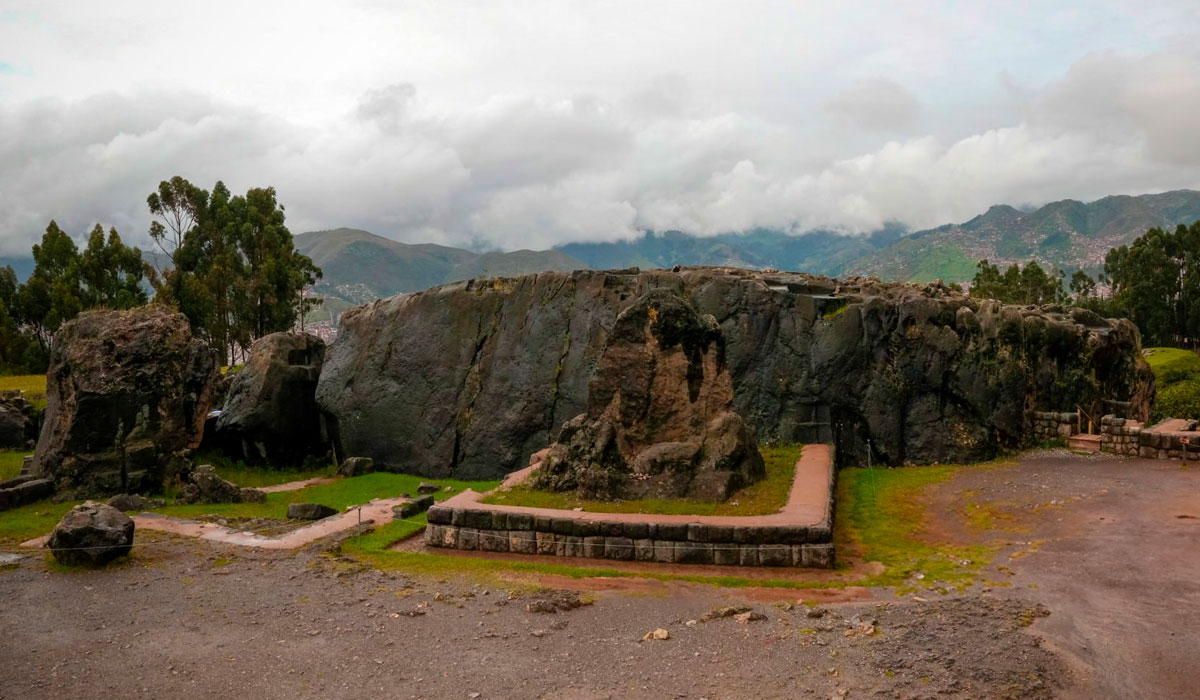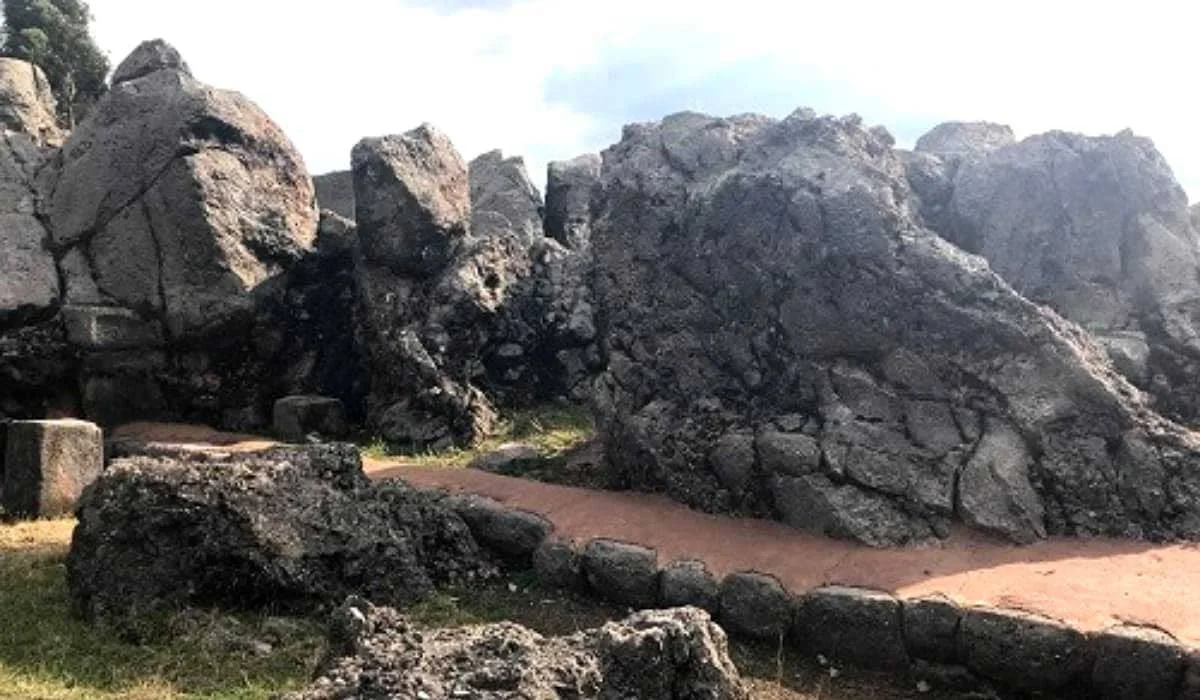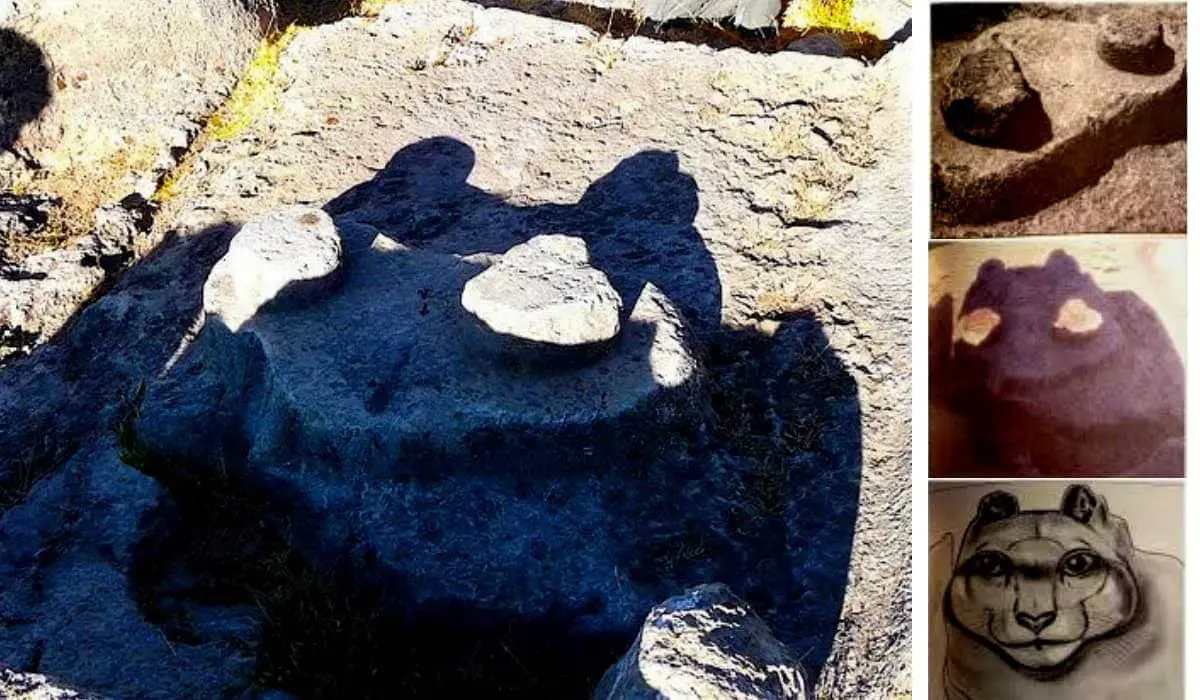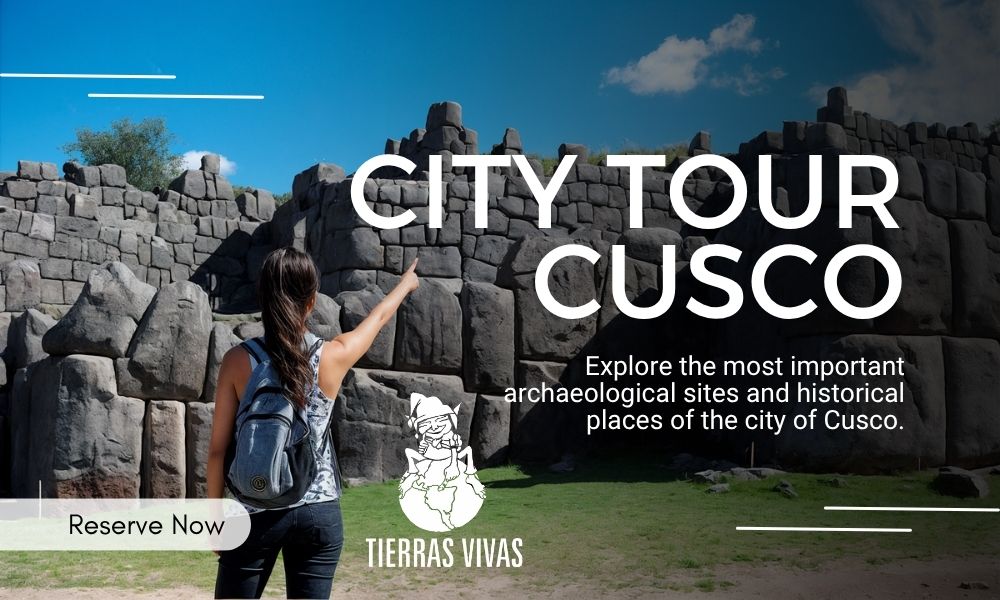The Quechua name Qenqo means labyrinth. In the worldview of Andean culture, this place was built to invoke Kaypacha, a legendary snake that gives rise to life.
This Qenqo Inca Ruins must have enjoyed a lot of importance due to the amazing remains that still stand despite the destruction caused by the Spaniards in the place. It is believed that the Incas used this place as a bridge to communicate with other of their gods such as the Sun, the earth, the mountains, the moon and the stars. Everything in this place has a special mystique, the amphitheater, the labyrinths, the canals and the sacrificial room. Even today there are many mysteries surrounding Qenqo Cusco Peru.
Qenqo Cusco Peru Information
- Location: Qenqo Temple Cusco is 3 km from the city of Cusco (approximately 15 minutes) and Tambomachay 7.5 km (approximately 20 minutes).
- Average temperature: The average temperatures range between 4.2 ° C and 19.6 ° C.
- Season: Cusco has two well-marked seasons: one rainy, between November and March, and one dry (the most recommended for your visit) between April and October.
- Important: Entrance with tourist ticket.
Qenqo History
Although the original name of this sanctuary is not known, by its form it was named K'enko which means 'maze'.
The Qenqo history say that when the Spaniards arrived in Cusco, they began to classify tall buildings such as buildings and castles according to their European mentality, and Qenqo Inca for presenting a semicircular construction was classified as a Coliseum. Being in fact a ceremonial space, which may well be an altar, where Mallquis or Inca Mummies were probably staying.
It is also believed that Qenqo Temple Cusco used to be a royal tomb, perhaps from Pachacutec. According to scholars, it is possible that it was one of the most important sanctuaries of the Inca civilization, whose nature has not yet been deciphered; in the enclosure the predilection that the Incas had for the carved stone stands out very carefully.
Within the sectors that can be differentiated in the place has, the amphitheater or the main square, where a great huaca or sanctuary can be detected, a controlled underground chamber for ceremonies dedicated to the world below, but many others say that the place for Moments and stone were made, finally, at the top you can see a small sucanca.
Qenqo Ruins Peru
The Qenqo Ruins Peru is divided into two parts HATUN Q’ENQO; it is Quechua that means Big Qenqo and the other part is named UCHUY Q’ENQO which means Little Qenqo.
Big Qenqo Inca covers most of the current tourist buildings such as the underground galleries; little Qenqo, however, is almost completely destroyed except for some carved stone walls and the urban layout of the site.
Big Qenqo
-
The amphitheater
It is a semicircular construction of 55 meters long with carved niches along the wall. In the center of the amphitheater a rock rises six meters high, which, it is assumed, may have been a sculpture. It has niches distributed around the amphitheater by way of seats, but according to recent research, it is very likely that in fact they have been the basis of a large wall, located in each of them, the representation of an entity to which they worshiped.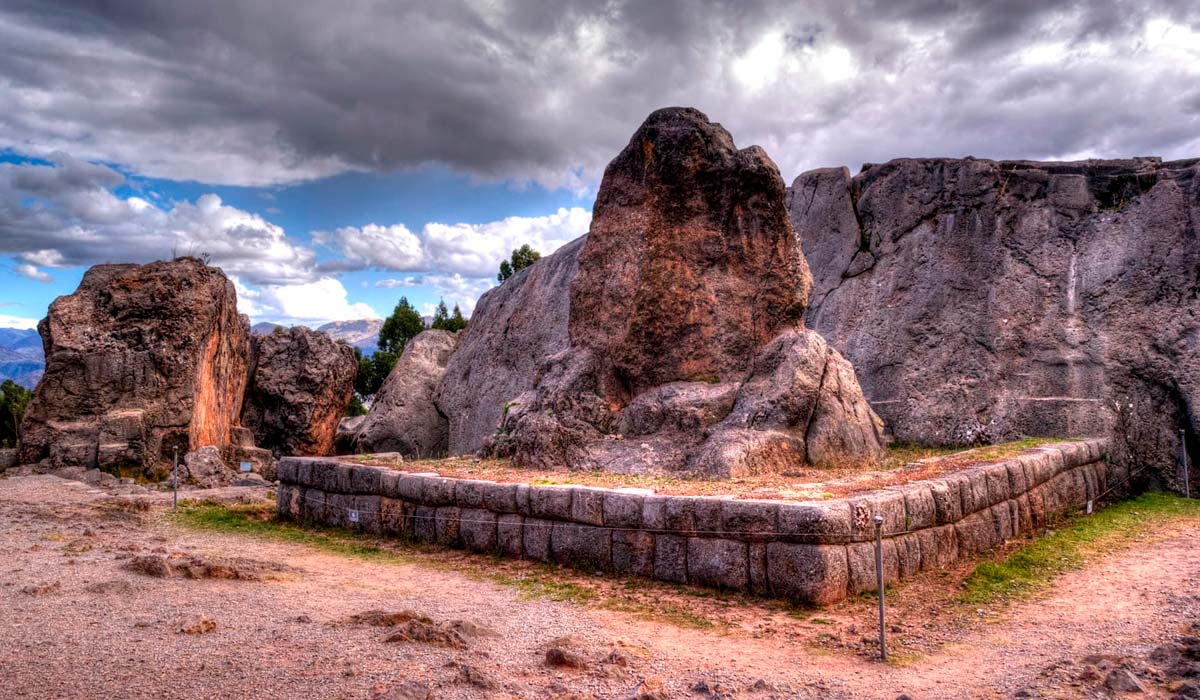
-
Carved stone
In the back of the stone a small rock formation rises in which you can find a staircase, carved in the live rock that leads to the summit. It is this place from a minor hole a small zigzag channel is born that descends and then forks in a two branches, one that follows the slope and another that descends to the underground chamber.
Perhaps it was poured chicha or blood of flames, offered in rituals not yet clarified. In the summit they are rest of carved of what could be a condor, whose head was removed; as well as that of a cougar. You can also see the remains of a room.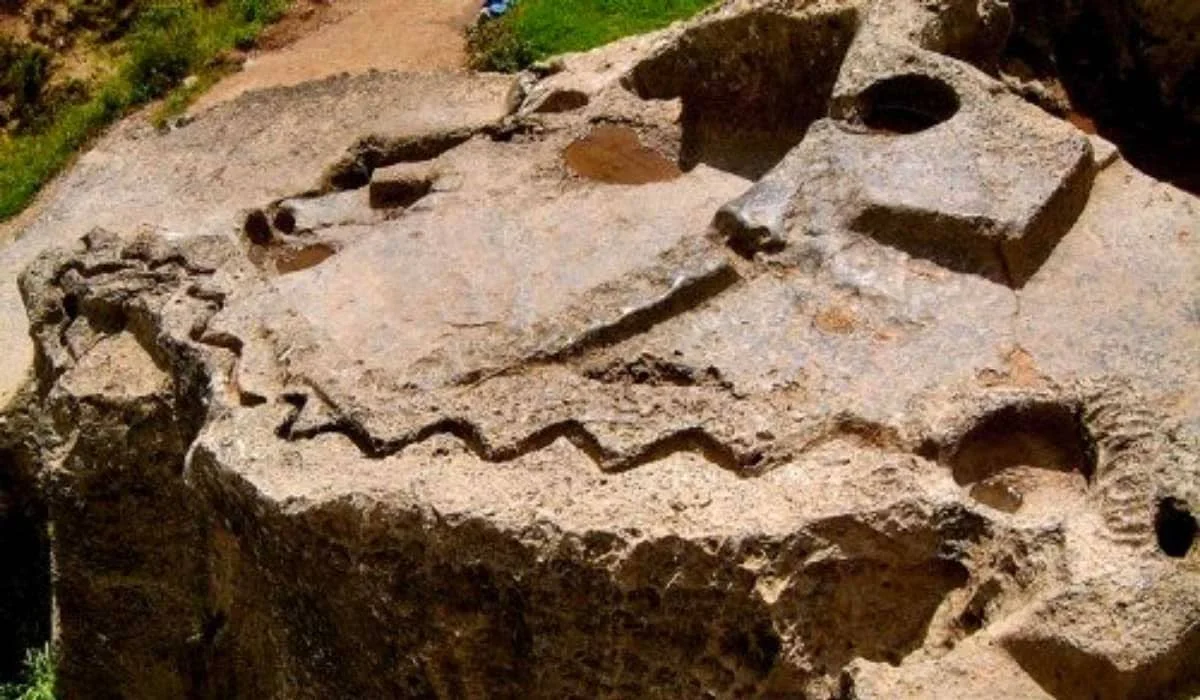
-
Intihuatana and Astronomical Observatory
Located in the upper part of the large rock, consisting of two cylindrical stone prominences that stand upright on a quasi-elliptical pedestal, all in situ carved in the upper part of the rock. The use of the Intiwatanas (where the sun is tied) during the Incario is so far an enigma. It is presumed that it was a kind of astronomical observatory, which the hamautás used to measure time, to establish the seasons, to determine the solstices and equinoxes, and also, as an observatory where the Sun, the Moon, Venus and the stars.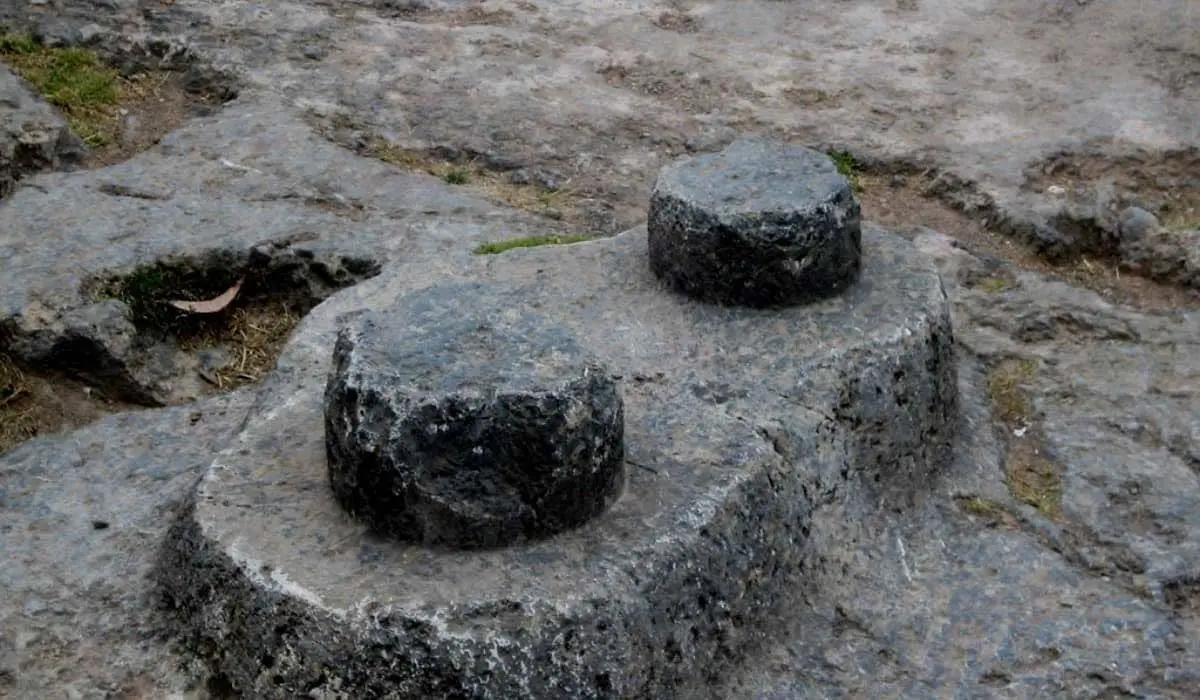
-
Underground chamber
It was excavated in the rock and both the floor and the ceiling and the walls are fully carved. Inside this room there are rooms and channels that were used to drain rainwater.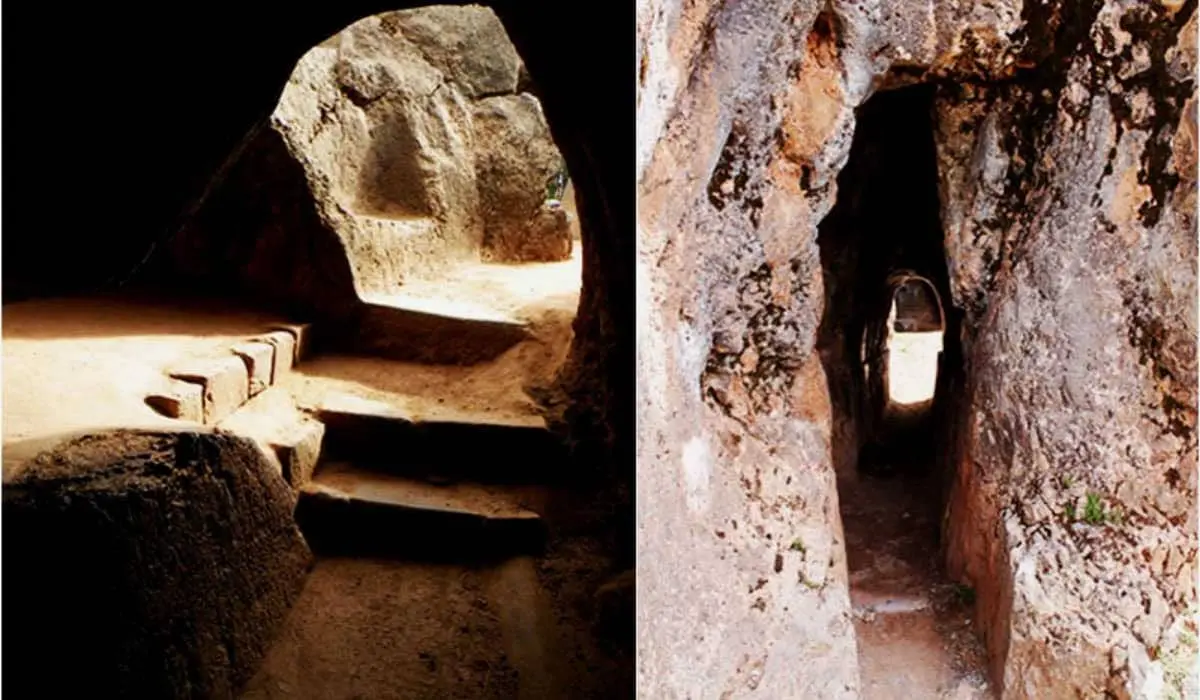
-
The sacrificial room
Underground chamber, made in the inner part, low portion of the large rock, so that floors, ceiling, walls, tables and cupboards are carved into a single gigantic rock. It is said that this underground chamber could have been used to embalm corpses of dried apricots, and also as a place of human sacrifice and flame.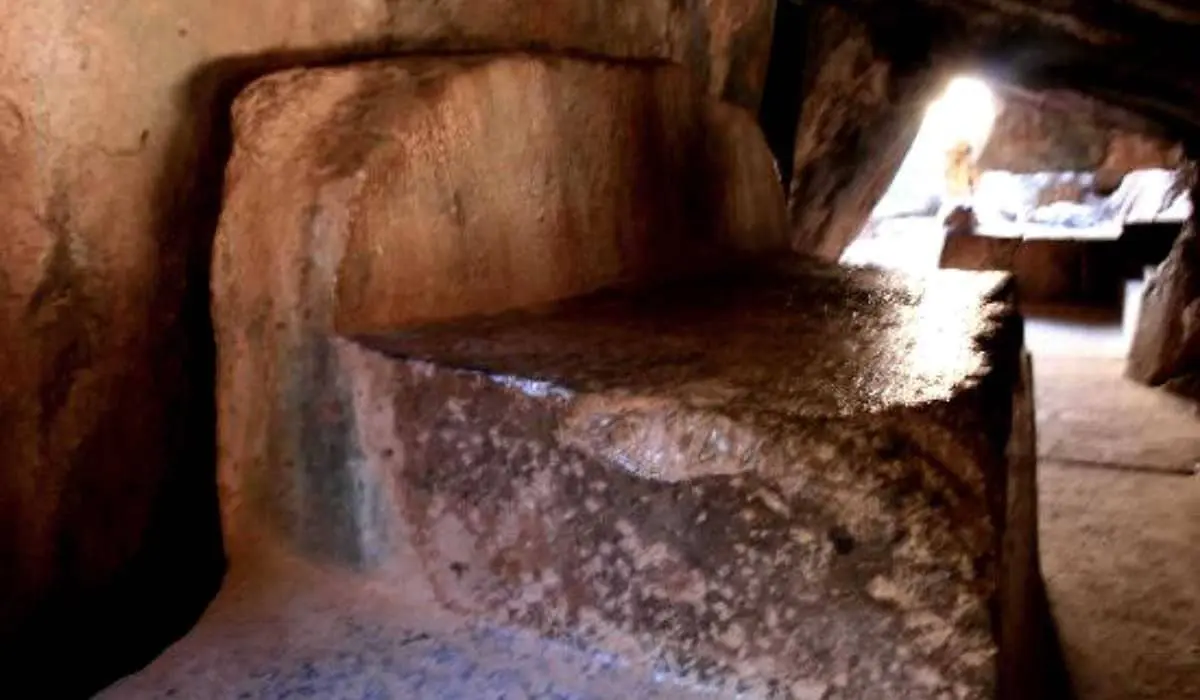
Little Qenqo
Little Qenqo is much more destroyed than Big Qenqo. It shows remains of high walls in circular shapes. According to archaeological studies that in this place contained very important Inca constructions it is reason that the Spanish destroy you.
Qenqo Puma
In Qenqo Ruins Peru you can see the dawn of the cougar announcing the starting point of the winter solistice, this is carried out together with the Inti Raymi party. In Big Qenqo every June 21 when the first rays of the sun show the shadow of a cougar.
Tour Qenqo Cusco
After flying from the capital of Perú, Lima, you will arrive in Cusco. From here, there are 2 ways you can take the Tour Qenqo Cusco:
City tour
To visit Qenqo Temple Cusco, the City Tour is the best option. On the tour you will visit very important archaeological complexes such as Qenqo, Puca Pucara, Tambomachay, Sacsayhuaman, the Cathedral of Cusco and Qoricancha.
How much does the city tour cost?
The price is 20 US dollars, does not include the tickets to the Archaeological Centers visited.
Tour Qenqo Cusco on your own
On foot: from Cusco along the same road (Circunvalación) that leads to Sacsayhuamán. It's 30 minutes of walking.
Bus: arrive by bus to Sacsayhuamán and then on foot to Qenqo.
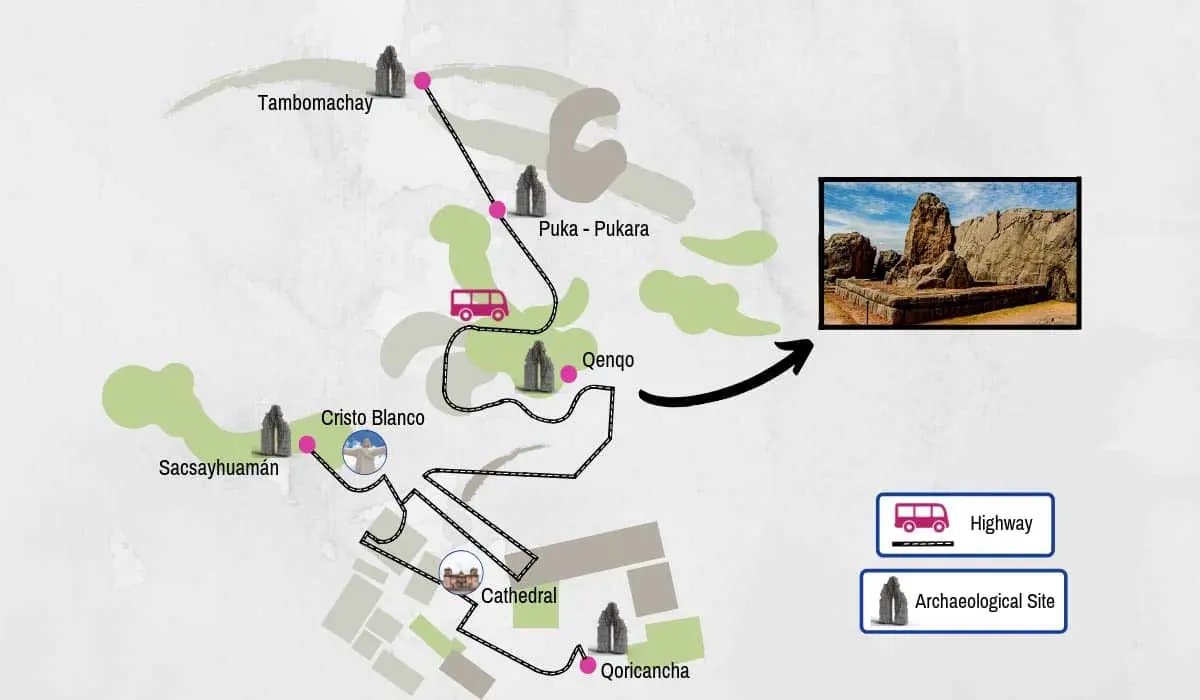
Tickets for Qenqo Cusco Peru
Remember to enjoy any of the 2 options for a Tour Qenqo Cusco, you have to buy your entrance ticket for Qenqo, neither the Tourist Ticket of Cusco nor the solo ticket for Qenqo Cusco Peru:
-
General Tourist Ticket Price
The price is 130 soles, includes entrance to Sacsayhuaman, Qenqo, Puca Pucara, Tambomachay, Pisac, Ollantaytambo, Maras, Moray and 15 museums of the city of Cusco the ticket is valid for 15 days. -
Partial Tourist Ticket Price
If you buy the partial ticket, you must ask the tourist surgeon number 1: This ticket costs 70 soles and is valid for 1 day and allows you to enter the following archaeological sites; the archaeological park of Sacsayhuaman, Qenqo, Puca Pucara, Tambomachay. Does not include the entrance to the Cathedral of Cusco and Qoricancha. -
Qenqo Solo Ticket
The entrance to the Qenqo Ruins Peru is 15 soles.
You can visit the Qenqo Cusco Peru from Monday to Sunday between 07:00 a.m. and 06:00 p.m. If you want to go on your own, we recommend visiting Qenqo Temple Cusco in the morning for security.
Qenqo Cusco Altitude
Qenqo Ruins Peru are located 5 kilometers northeast of the center of the city of Cusco, the Qenqo Cusco altitude is 11,745' (3,580 m).
Its location is on Socorro hill, its territory covers about 3,500 square meters, from this point one can appreciate beautiful views, one of them the panoramic view of the city of Cusco.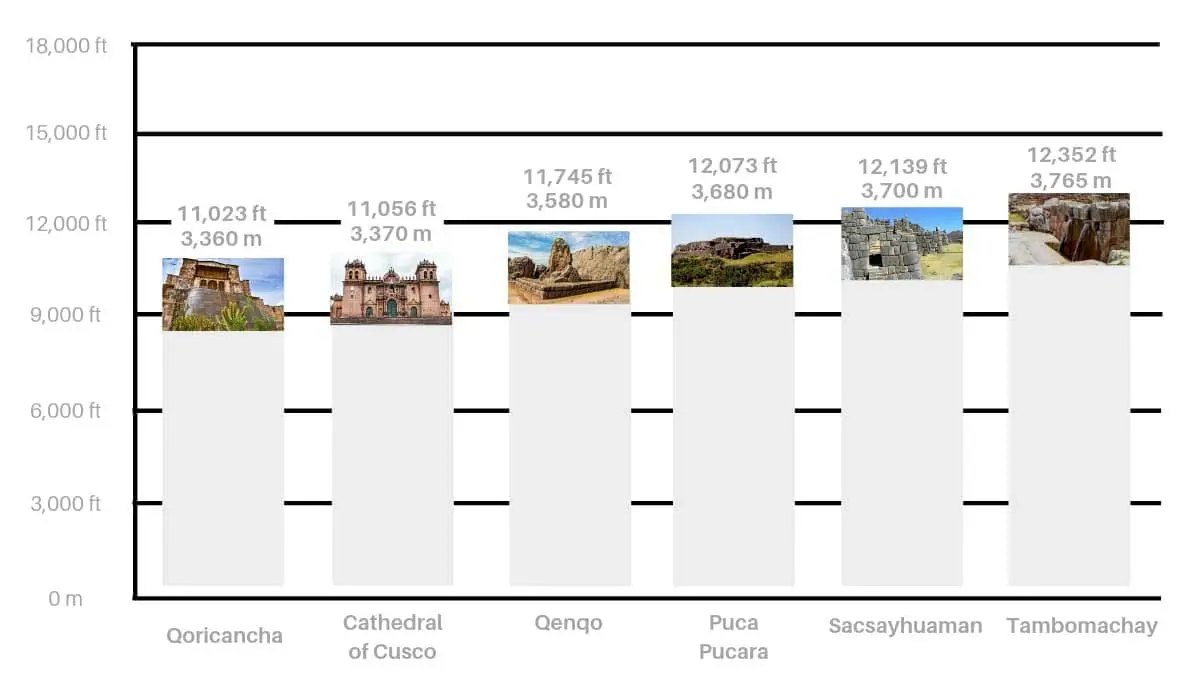 Distances and altitudes during the Tour Qenqo Cusco
Distances and altitudes during the Tour Qenqo Cusco
| Tour | Distance |
| Qoricancha to Cathedral of Cusco | 0.95 km (0.59 miles) |
| Cathedral of Cusco to Sacsayhuaman | 0.7 km (0.43 miles) |
| Sacsayhuaman to Qenqo | 1.5 km (0.93 miles) |
| Qenqo to Puca Pucara | 4 km (2.48 miles) |
| Puca Pucara to Tambomachay | 0.17 km (0.11 miles) |
Qoricancha – Cathedral of Cusco
Altitude
- Starting Elevation 'Qoricancha' - 11,023 feet (3360 meters)
- Final Elevation 'Cathedral of Cusco' – 11,056 feet (3370 meters)
Distance
- Total distance 0.95 km (aprox.)
- Estimated walking time 8 min
- Maximum altitude point 11,056 ft (aprox.)
Cathedral of Cusco - Sacsayhuaman
Altitude
- Starting Elevation 'Cathedral of Cusco' - 11,056 feet (3370 meters)
- Final Elevation 'Sacsayhuaman' – 12,139 feet (3700 meters)
Distance
- Total distance 0.7 km (aprox.)
- Estimated walking time 14 min
- Maximum altitude point 12,139 ft (aprox.)
Sacsayhuaman - Qenqo
Altitude
- Starting Elevation 'Sacsayhuaman' – 12,139 feet (3700 meters)
- Final Elevation 'Qenqo' – 11,745 feet (3580 meters)
Distance
- Total distance 1.5 km (aprox.)
- Estimated walking time 22 min
- Maximum altitude point 12,139 ft (aprox.)
Qenqo - Puca Pucara
Altitude
- Starting Elevation 'Qenqo' – 11,745 feet (3580 meters)
- Final Elevation 'Puca Pucara' – 12,073 feet (3680 meters)
Distance
- Total distance 4 km (aprox.)
- Estimated walking time 57 min
- Maximum altitude point 12,073 ft (aprox.)
Puca Pucara - Tambomachay
Altitude
- Starting Elevation Elevation 'Puca Pucara' – 12,073 feet (3680 meters)
- Final Elevation 'Tambomachay' – 12,352 feet (3765 meters)
Distance
- Total distance 0.17 km (aprox.)
- Estimated walking time 3 min
- Maximum altitude point 12,352 ft (aprox.)
Other Tours in Cusco to complement your visit to Qenqo
The famous Inca Trail Tours are the most popular excursions in Cusco - Peru; and considered among the best walks in the world.
- Salkantay Trek 5 Days
- Inca Quarry Trail 4 Days
- Machu Picchu 3 Day Hike
- 2 Day Inca Trail Tour
- 2 Day Inca Trail with camping
If you will visit Machu Picchu, remember to book your Machu Picchu Tickets in advance, so you can enjoy your Vacation to Machu Picchu without any problem.
Pictures of Qenqo Cusco Peru
